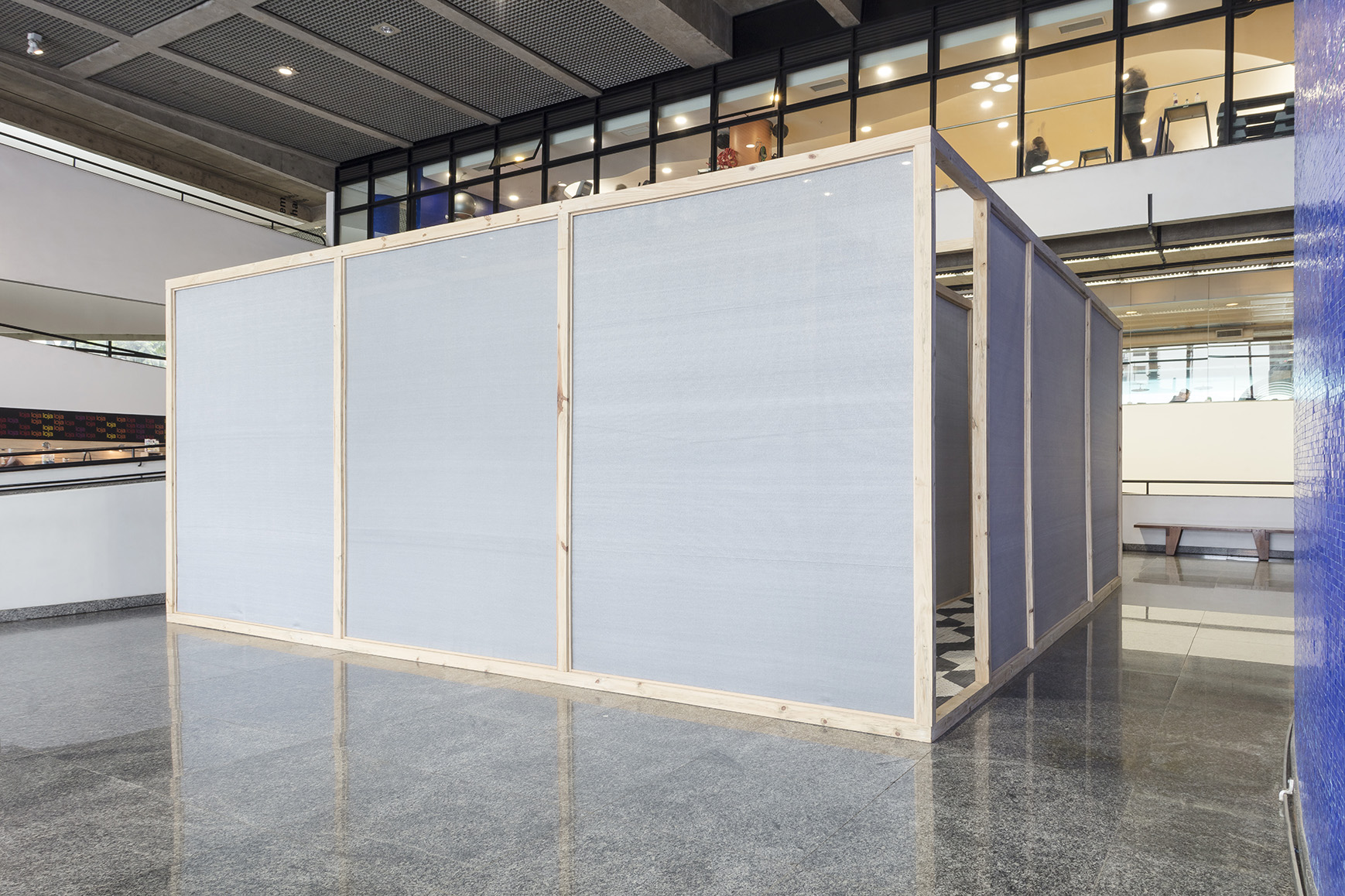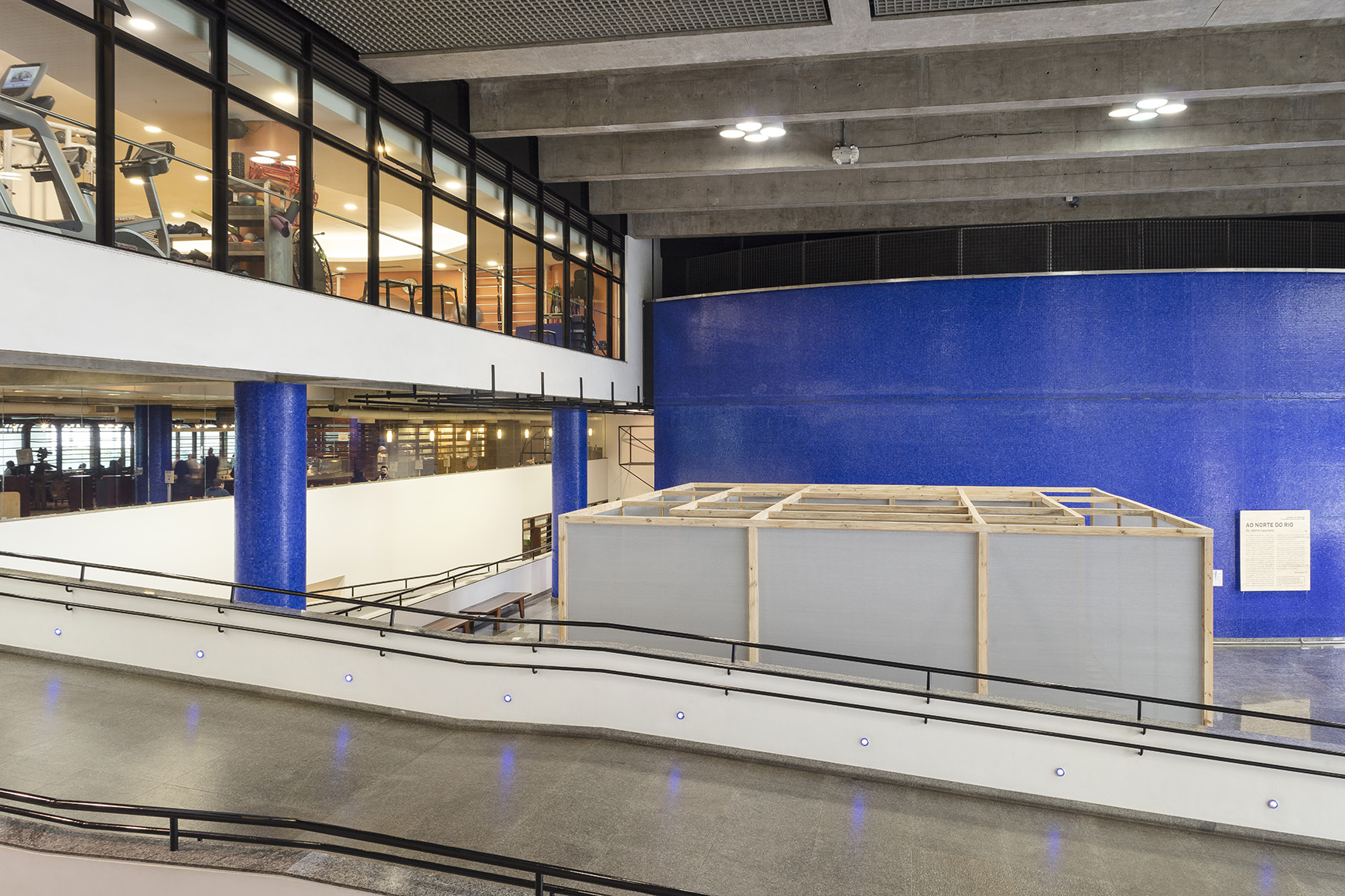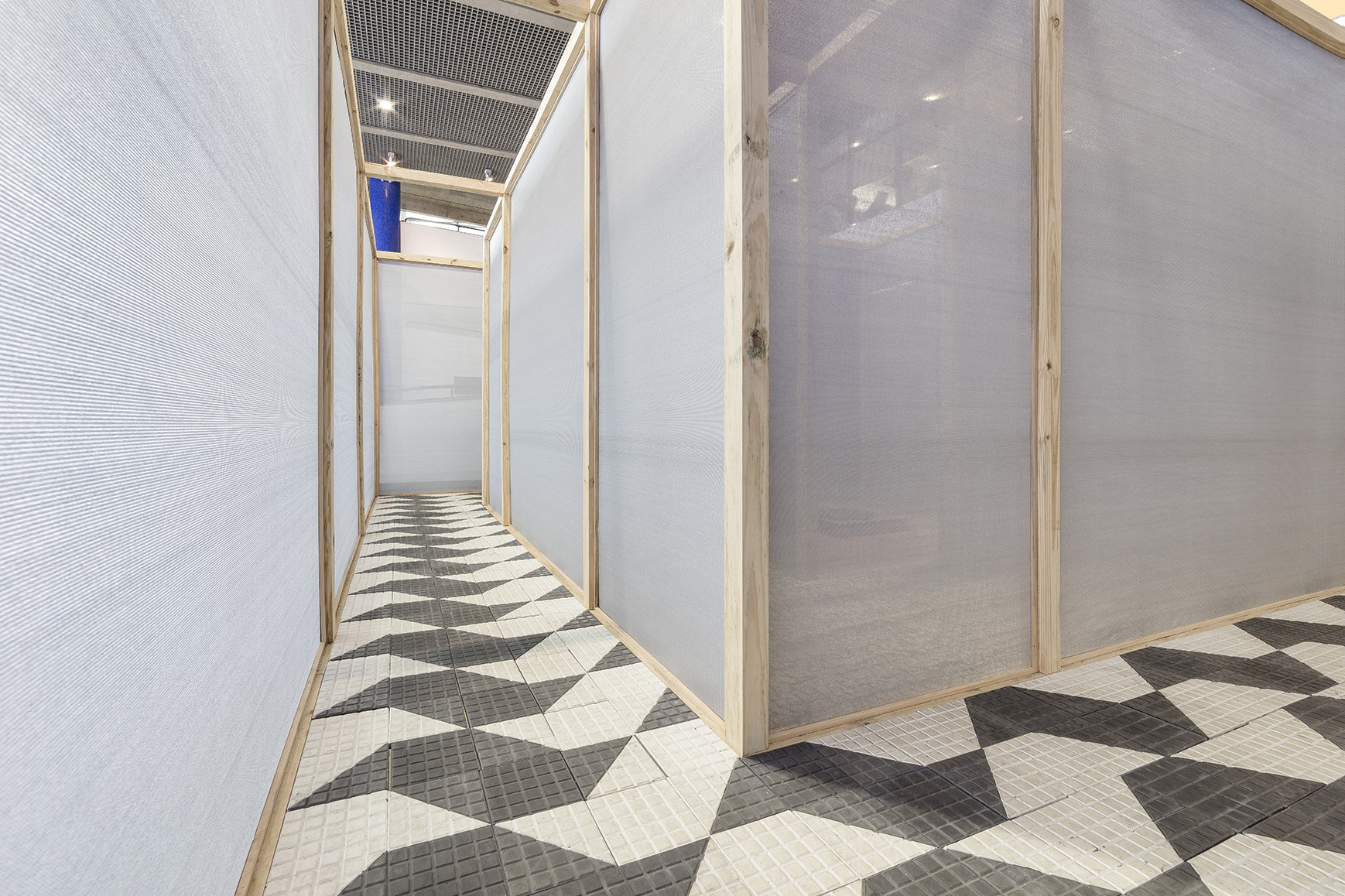









ao norte do rio (from the north of the river), 2018
installation (wooden beams, shade netting, hydraulic tiles with typical Sao Paulo pavement pattern, Portuguese stones, colonial bricks and replica of the ground zero plate of the city of São Paulo, fused from different metals, such as brass and remnants of ammunition cartridges, collected in areas of armed conflicts in Brazil)
7 x 3 x 7,15 m
photos Filipe Berndt
concept by Jaime Lauriano
expo-graphic project by Clarice Cunha
production by Sol Casal
technical production, construction and installing by Elástica SP Cenografia
It is an intervention created to raise attention on how the ideas of border, center and periphery, are shaped by the interests of the oligarchies that are in control of the cities. In the city of São Paulo, Pinheiros and Tiete rivers are commonly used as "borders" of several ways of exploitations and neglects by the city's public policies; to control bodies; and at the same time to constraint access to certain regions of the city.
That is the reason why I chose, as the starting point for the work from the north of the river, two events, both parts of the urban history of São Paulo. The first one, the establishment of the current "Ground Zero" of the city, was part of a renovation project of the city center. Another event, which worked as a foundation for the design of the intervention, became known as the "Plan of Avenues", as it was the result of a study by the Engineer Francisco Prestes Maia, who projected another major remodeling of the mobility system in São Paulo, using a radio concentric plan that expanded from the center of the city to the so-called "peripheries". These two developments, however, did not consider the progress of the so-called "peripheral" neighborhoods.
Starting from the theoretical scheme of the "Plan of Avenues", an immersive installation was built, so the public could walk through different types of pavements, typical of the colonial and modernist architectures of São Paulo. Right in the center of the it there was the replica of the current "Ground Zero", made from the casting of different metals, such as brass and remnants of ammunition cartridges collected in areas of armed conflict in Brazil, especially the ones used in the "Operations" of the army and military police in the "peripheral" Brazilian neighborhoods.